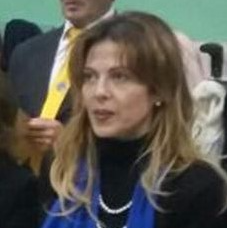Advanced Materials and Interfaces for Optoelectronic Sensors
A special issue of Sensors (ISSN 1424-8220). This special issue belongs to the section "Physical Sensors".
Deadline for manuscript submissions: closed (31 December 2022) | Viewed by 4680
Special Issue Editors
Interests: computational and mathematical modelling for photonic materials and structures; sensing; energy conversion; lighting
Special Issues, Collections and Topics in MDPI journals
Interests: silicon; nanostructures; nanotechnologies; silicon based optoelectronic devices; enhanced light–matter interaction
Special Issues, Collections and Topics in MDPI journals
Special Issue Information
Dear Colleagues,
Photonic and optoelectronic sensors constitute integral parts of various fields, including gas sensing, biological sensing, and molecular analysis. These concepts find application in environmental monitoring, food or medicine quality control, safety, and security. For these technologies to be competitive, they must exhibit performant properties in terms of selectivity, sensitivity, throughput, resolution, and reliability. These requirements have in common that they rely on specifically designed transducing elements, comprising structured interfaces made of specifically chosen, functional materials. The success highly depends on the ability to tune and optimize the transducing elements to the desired need. This tuning can be pursued at several levels, from material design to geometrical interface considerations, potentially leading to comprehensive, multiscale approaches. The sensor performance can be fostered by engineering the materials and the nanoscale interface structure, via either bottom–up or top–down approaches. Material engineering includes creating hybrid structures or composite materials, providing the opportunity to tune their electro-optical characteristics. The several degrees of freedom introduced by the combination of 1D to 3D structures (particles, nanowires, gratings, and photonic/plasmonic crystals) further contribute to enhanced light–matter interaction. The combination paves the way to advanced sensing concepts, including plasmonic, surface-resonance, and surface-enhanced methods. Introducing properly designed structures with multi-periodicity or deterministic aperiodicity further creates the opportunity for structure-tailored signal processing, such as multivariate analysis.
We are proud to announce this Special Issue on “Advanced Materials and Interfaces for Optoelectronic Sensors”, aiming at publishing the most relevant work on state-of-the-art materials and structures for optoelectronic sensing. In this Special Issue, we welcome high-quality contributions, such as original research articles, letters, and review articles, covering experimental and theoretical aspects within, but not limited to, the following highlight areas:
Material and device concepts
- Particle- and nanowire-based sensors;
- Hybrid (chemical/structural) nanostructures for sensing applications;
- Metallic/non-metallic nanostructures with sensing functionality;
- Nanocomposites (metal oxides and carbon nanostructures);
- Plasmonic, surface-resonance, and surface-enhanced sensing concepts;
- Coupled microfluidic and optoelectronic sensing approaches;
- Advanced, interface-specific signal processing for optical and optoelectronic sensors.
Highlighted application areas
- Gas sensing;
- Biosensing;
- Microfluidic sensing;
- SERS
Prof. Dr. Jost Adam
Dr. Rosaria A. Puglisi
Guest Editors
Manuscript Submission Information
Manuscripts should be submitted online at www.mdpi.com by registering and logging in to this website. Once you are registered, click here to go to the submission form. Manuscripts can be submitted until the deadline. All submissions that pass pre-check are peer-reviewed. Accepted papers will be published continuously in the journal (as soon as accepted) and will be listed together on the special issue website. Research articles, review articles as well as short communications are invited. For planned papers, a title and short abstract (about 100 words) can be sent to the Editorial Office for announcement on this website.
Submitted manuscripts should not have been published previously, nor be under consideration for publication elsewhere (except conference proceedings papers). All manuscripts are thoroughly refereed through a single-blind peer-review process. A guide for authors and other relevant information for submission of manuscripts is available on the Instructions for Authors page. Sensors is an international peer-reviewed open access semimonthly journal published by MDPI.
Please visit the Instructions for Authors page before submitting a manuscript. The Article Processing Charge (APC) for publication in this open access journal is 2600 CHF (Swiss Francs). Submitted papers should be well formatted and use good English. Authors may use MDPI's English editing service prior to publication or during author revisions.
Keywords
- optoelectronic sensors
- nanostructures
- composites
- hybrids
- plasmons







